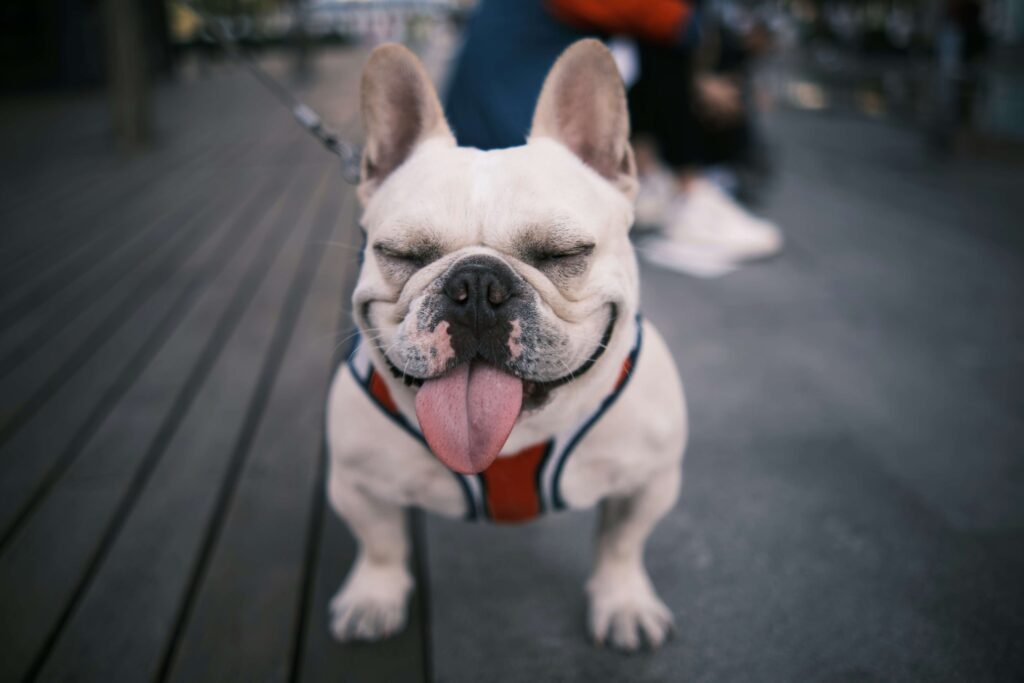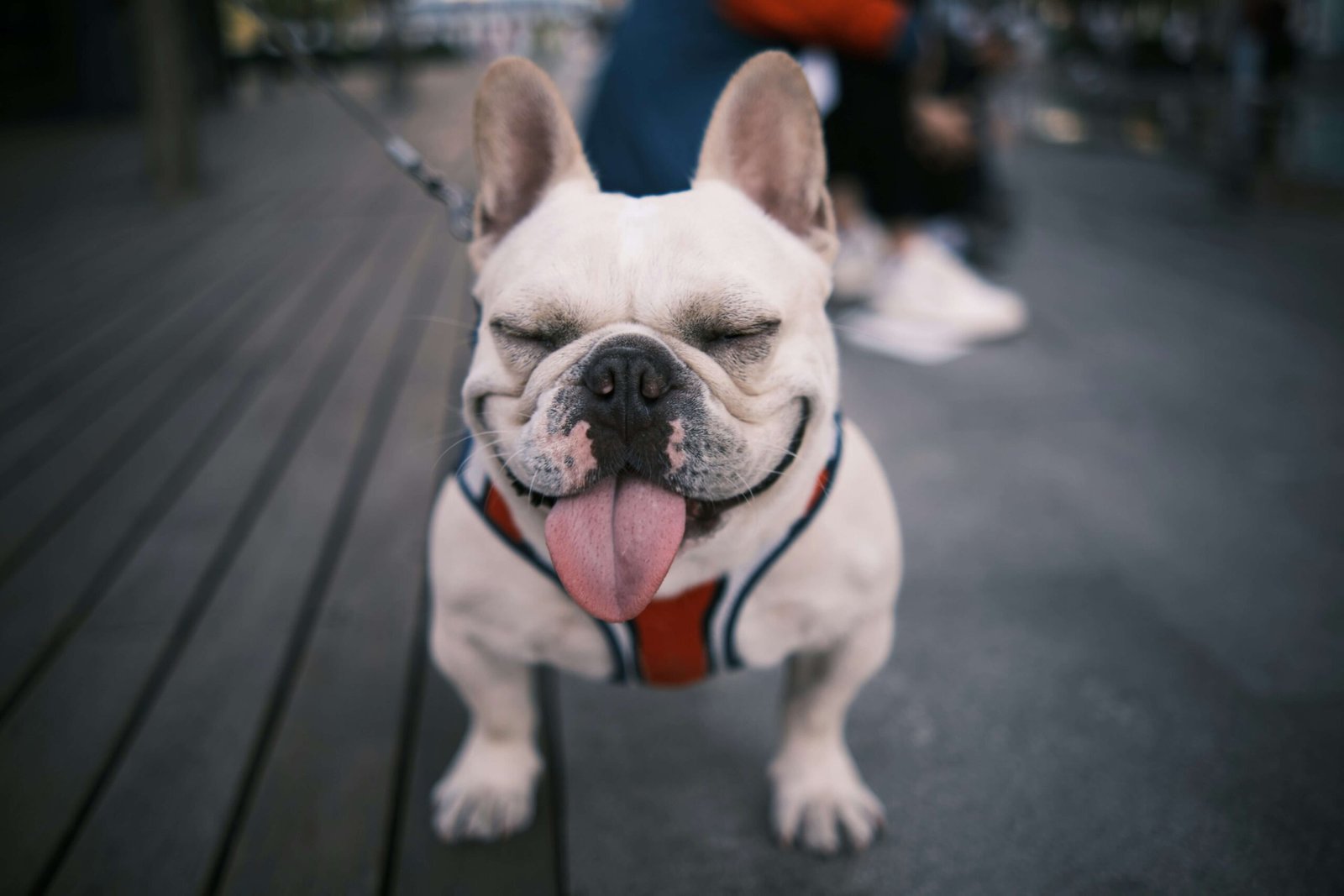Low-Energy Dog Breeds: Perfect Companions for a Relaxing Lifestyle
If you’re looking for a furry friend who matches your laid-back lifestyle, low-energy dog breeds might be the perfect fit. These dogs are content with minimal exercise, making them ideal companions for apartment dwellers, seniors, or anyone who prefers a quieter pace of life. Unlike high-energy breeds that require hours of activity, low-energy dogs thrive on calm routines and cozy cuddles. In this blog post, we’ll explore the best low-energy dog breeds, their unique characteristics, and how they can seamlessly integrate into your home. Whether you’re a first-time dog owner or simply seeking a relaxed four-legged companion, this guide has everything you need to know.
Top Low-Energy Dog Breeds You Should Consider
Choosing the right low-energy dog breed depends on your lifestyle and preferences. Here are some of the most popular and beloved low-energy breeds that make excellent companions for relaxed households.
Bulldog:
Known for their wrinkly faces and stocky build, Bulldogs are gentle, affectionate, and perfectly happy lounging around the house.Basset Hound:
With their droopy eyes and soulful expressions, Basset Hounds are calm, loyal, and enjoy leisurely walks rather than intense exercise.Shih Tzu:
These small, fluffy dogs are playful yet low-key, thriving in apartments and enjoying quiet time with their owners.Cavalier King Charles Spaniel:
Friendly and adaptable, this breed is happy to curl up on the couch or join you for a short stroll.French Bulldog:
Compact and charming, French Bulldogs are known for their easygoing nature and love for indoor living.
These breeds prove that you don’t need a high-energy dog to experience unconditional love and companionship.

Why Low-Energy Dogs Are Ideal for Certain Lifestyles
Low-energy dogs offer unique benefits that cater to specific lifestyles. Whether you live in a small space or have limited time for outdoor activities, these breeds adapt effortlessly to your needs.
Perfect for Apartment Living:
Low-energy dogs require less space and are less likely to disturb neighbors with excessive barking or restlessness.Great for Seniors:
Their calm demeanor makes them ideal companions for older adults who want a loyal pet without the demands of rigorous exercise.Suitable for Busy Owners:
If your schedule doesn’t allow for long walks or playtime, low-energy dogs are content with shorter interactions and plenty of downtime.Less Stressful for First-Time Owners:
New dog owners often feel overwhelmed by high-energy breeds; low-energy dogs provide a more manageable introduction to pet ownership.Cost-Effective Care:
These breeds typically require fewer resources, such as extensive grooming or high-calorie diets, saving both time and money.
With so many advantages, it’s no wonder low-energy dogs are growing in popularity among diverse households.
Check this guide 👉Exploring Taiwanese Dog Breeds: Best 7 Expert Tips!
Check this guide 👉Jamaican Dog Breeds: Best 7 Expert Tips!
Check this guide 👉Longest Living Big Dog Breeds: Best 7 Expert Tips!
Benefits of Low-Energy Dog Breeds | Challenges to Consider |
|---|---|
Require minimal exercise | Some breeds may be prone to weight gain |
Thrive in small spaces like apartments | Certain breeds may struggle with heat |
Ideal for seniors or busy individuals | Potential health issues (e.g., brachycephalic breeds) |
Less demanding on your daily schedule | May not suit active families or children |
Cost-effective care and maintenance | Can develop separation anxiety if ignored |
How to Keep Your Low-Energy Dog Happy and Healthy
Even though low-energy dogs don’t require much exercise, they still need mental stimulation and proper care to thrive. Here are some tips to ensure your furry friend stays content and healthy.
Provide Short Walks:
A 15-20 minute walk daily is usually sufficient to keep your dog physically active and mentally engaged.Engage in Playtime:
Simple games like fetch or tug-of-war indoors can fulfill their need for interaction without overexertion.Offer Puzzle Toys:
Interactive toys challenge their minds and prevent boredom during downtime.Monitor Their Diet:
Low-energy dogs are prone to weight gain, so feed them a balanced diet and avoid overfeeding treats.Create a Comfortable Space:
Ensure they have a cozy spot to relax, whether it’s a soft bed or a quiet corner of your home.
By incorporating these practices, you can enhance your dog’s well-being while maintaining their easygoing nature.
Common Misconceptions About Low-Energy Dogs
There are several myths surrounding low-energy dog breeds that can lead to misunderstandings. Let’s debunk some of these misconceptions to set realistic expectations.
They Don’t Need Any Exercise:
While they require less activity than high-energy breeds, regular movement is still essential for their physical and mental health.All Low-Energy Dogs Are Lazy:
Many low-energy breeds are playful and enjoy engaging with their owners, just at a slower pace.They’re Not Good with Kids:
Several low-energy breeds, like the Cavalier King Charles Spaniel, are incredibly gentle and loving toward children.They Don’t Form Strong Bonds:
On the contrary, low-energy dogs often form deep connections with their owners due to their affectionate personalities.They’re Always Healthy:
Some low-energy breeds, particularly flat-faced ones, may face health challenges requiring attentive care.
Understanding these truths helps dispel stereotypes and fosters better appreciation for what low-energy dogs bring to the table.
Tips for Choosing the Right Low-Energy Breed
Selecting the best low-energy dog breed for your household involves considering several factors. These tips will guide you toward finding the perfect match.
Assess Your Living Space:
Smaller breeds like Shih Tzus or French Bulldogs are better suited for apartments, while larger breeds like Greyhounds may need more room.Consider Your Activity Level:
Match your dog’s energy level to your own to ensure compatibility and mutual happiness.Research Health Issues:
Some low-energy breeds are prone to specific conditions, so understanding potential risks is crucial.Think About Grooming Needs:
Breeds like the Cavalier King Charles Spaniel require regular grooming, while others, like Bulldogs, need minimal upkeep.Visit Breed-Specific Rescues:
Adopting from rescues ensures you find a dog whose personality aligns with your lifestyle.
Taking these factors into account increases your chances of finding a lifelong companion that fits seamlessly into your home.
Fun Activities for Low-Energy Dogs
Just because your dog is low-energy doesn’t mean they can’t enjoy fun activities! Here are some ideas to keep them entertained without overexertion.
Indoor Treasure Hunts:
Hide treats around your home and encourage your dog to sniff them out—a great way to stimulate their senses.Short Training Sessions:
Teach basic commands or tricks using positive reinforcement to engage their minds.Puppy Playdates:
Arrange low-key meetups with other mellow dogs for socialization and light play.Leisurely Park Visits:
Opt for quiet parks where your dog can explore and relax without feeling overwhelmed.Cozy Movie Nights:
Invite your pup to join you on the couch for a relaxing evening of bonding.
These activities strike the perfect balance between fun and relaxation for your laid-back pooch.
Signs Your Low-Energy Dog Is Unhappy
Even low-energy dogs can show signs of distress if their needs aren’t met. Recognizing these signals ensures your furry friend remains happy and healthy.
Excessive Sleeping:
While low-energy dogs sleep a lot, unusual lethargy could indicate illness or discomfort.Loss of Appetite:
Refusing food or water may signal underlying health issues or emotional distress.Increased Barking or Whining:
Sudden vocalizations can point to boredom, anxiety, or pain.Destructive Behavior:
Chewing furniture or other items might mean your dog needs more mental stimulation.Withdrawal from Interaction:
Avoiding affection or hiding could suggest unhappiness or fear.
Addressing these signs promptly helps maintain your dog’s overall well-being and strengthens your bond.
Frequently Asked Questions About Low-Energy Dog Breeds
What defines a low-energy dog breed?
A low-energy dog breed is characterized by its calm demeanor, minimal exercise requirements, and preference for lounging over intense physical activity.
Are low-energy dogs good for apartments?
Yes, most low-energy breeds adapt well to apartment living due to their space-friendly behavior and lower exercise needs.
Do low-energy dogs require any exercise?
Absolutely! While they don’t need long hikes or runs, short walks and play sessions are important to maintain their physical and mental health.
Can low-energy dogs live with children?
Many low-energy breeds are great with kids because of their patient and tolerant nature, though supervision is always recommended.
How can I prevent my low-energy dog from gaining weight?
Monitor their food intake, provide regular but moderate exercise, and consult your vet for dietary advice tailored to your dog’s needs.
Are low-energy dogs less affectionate?
Not at all! These dogs are often incredibly loving and enjoy spending quality time with their human companions.
Which low-energy breed is easiest to train?
Breeds like the Cavalier King Charles Spaniel and Pug are known for their eagerness to please, making them relatively easy to train.
Understanding Cryptosporidium in Cats: Best 7 Expert Tips! – Spot symptoms, treat safely, and stop parasite spread in your home.
Understanding Cryptosporidium in Dogs: Best 7 Expert Tips! – Learn symptoms, treatment & prevention for this stubborn gut parasite.
Understanding Syringomyelia in Cats: Best 7 Expert Tips! – Recognize signs, manage pain, and support your cat’s neurological health with vet-backed guidance.
Understanding Syringomyelia in Dogs: Best 7 Expert Tips! – Expert insights on symptoms, MRI diagnosis, pain management & quality of life.





